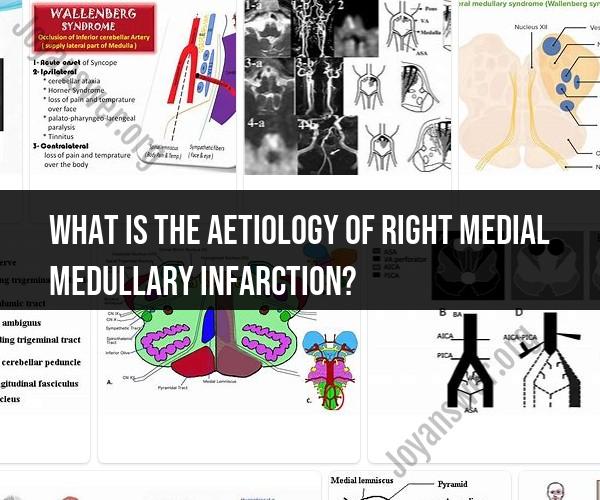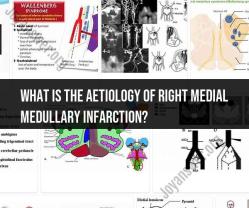What is the aetiology of right medial medullary infarction?
The etiology of right medial medullary infarction, also known as medial medullary syndrome or Dejerine syndrome, is typically related to a disruption in blood supply to the right side of the medulla oblongata in the brainstem. This disruption in blood flow can occur due to several underlying causes:
Atherosclerosis: A common cause of right medial medullary infarction is the narrowing of the arteries (atherosclerosis) that supply blood to the medulla. This narrowing can result from the buildup of fatty deposits (plaques) in the arteries, reducing blood flow.
Embolism: Another common cause is the embolism of a blood clot or plaque fragment that travels from another part of the circulatory system and becomes lodged in the smaller arteries supplying the medulla on the right side. This can block blood flow and cause an infarction.
Small Vessel Disease: Sometimes, the smaller blood vessels within the medulla can be affected by small vessel disease, leading to decreased blood flow and infarction.
Vascular Abnormalities: Rarely, vascular abnormalities such as arteriovenous malformations (AVMs) or aneurysms can contribute to medullary infarctions.
High Blood Pressure (Hypertension): Chronic hypertension can weaken and damage blood vessels, making them more susceptible to rupture or blockage, which can contribute to infarctions.
Cardioembolic Sources: Conditions like atrial fibrillation, which can lead to the formation of blood clots in the heart, increase the risk of embolisms reaching the medulla.
Other Medical Conditions: Certain medical conditions, such as vasculitis (inflammation of blood vessels), can affect the blood vessels in the brainstem and contribute to infarctions.
Trauma: In rare cases, trauma or injury to the blood vessels in the brainstem can lead to infarction.
The right medial medullary infarction results in specific neurological symptoms due to the damage in the medulla, which is responsible for controlling various vital functions and motor and sensory pathways. Common symptoms include weakness or paralysis on the left side of the body, impaired sensation on the right side of the face and the left side of the body, and other neurological deficits. The specific symptoms may vary depending on the location and extent of the infarction.
Diagnosis typically involves a combination of clinical assessment, imaging studies (such as MRI or CT scans), and evaluation of the patient's medical history to determine the underlying cause and plan appropriate treatment, which may include addressing the underlying vascular risk factors, anticoagulation therapy, or other interventions as necessary. Early intervention is crucial for the best possible outcomes.






